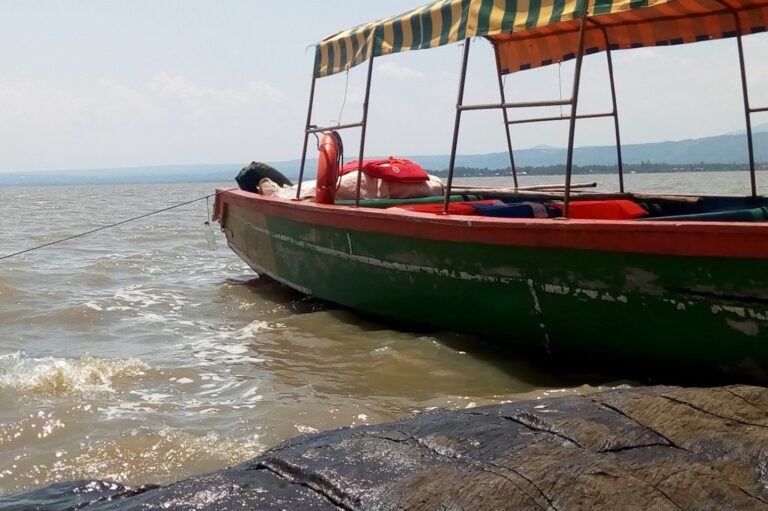Luxury Wildlife Safaris and Beach Holidays To
Tanzania
HIGHLIGHTS
In addition to bird watching, chimpanzee trekking and romantic islands, Tanzania’s main wildlife highlight is the annual wildebeest and zebra migration which can be seen in the Serengeti year round.
Tanzania, the Land of Mount Kiliimanjaro
Explore Tanzania's Majestic Landscapes from the Serengeti to the spice Islands of Pemba and Zanzibar
From the sweeping plains of the Serengeti and the Ngorongoro Crater in the north, Tanzania retains its combined charm of the wilderness and idyllic coastal beaches. Tanzania, home to Mount Kilimanjaro, Africa’s highest mountain that needs no introduction, and looms proudly with brightly snow-capped peaks.
The alluring spice island of Zanzibar tantalizes with turquoise warm waters, while sun and sand kiss its long stretching beaches. Tanzania also has a dozen UNESCO heritage sites, enhancing the kaleidoscopic diversity of Tanzania, making it an all-year-round holiday choice for new or even seasoned travelers. For whatever thoughts about Tanzania, we can assure you that the land of Mount Kilimanjaro is indeed a destination like no other in Africa.
Home to some of the world’s most diverse wildlife, Tanzania is certainly an iconic safari destination. Arguably best known for the incredible landscapes of Serengeti National Park especially during the endless wildebeest migration. To be honest, there’s so much more to see in this fascinating country.
Discovering Ngorongoro Crater certainly astounded us. Created by a large volcano, which exploded and collapsed up to three million years ago, this jaw-dropping site has its own ecosystem, and needs to be seen to be believed – it’s awesomely mind-blowing.
We know just how incredible spotting your first wild animal is, so our experts truly recommend exploring the Tarangire and Lake Manyara National Parks for first timers in Tanzania. Both parks are teeming with majestic wildlife, and even elegant bright pink flamingo in the latter. While visiting Tanzania, Oluokos Signature will endeavor to keep you away from the masses, steering you towards the best times of year and selecting secluded conservancies to ensure you get an authentic, natural safari experience, yet still exploring the best this country has to offer.
For the most part, luxury safaris in Tanzania focus on game drives as the primary mode of wildlife viewing. Days, are typically scheduled around an early morning and an afternoon drive or for those who want to observe more and prefer being out for longer day.
Sunset is observed with sundowners’ in-hand—a gin and tonic is the tradition—served in a scenic spot. Depending on your camp or lodge, a gourmet, multi-course dinner can be taken convivially with other guests, privately in your room or al fresco under the star-studded sky in the bush. After dark, you might gather round an outdoor fire, stargaze, enjoy a night game drive if you are staying in the private wildlife sanctuaries, lay out on a star bed or simply retreat to your room to rest for the next sumptuous day on safari.
Activities like hot air ballooning in the Serengeti, guided bush walks, community visits, research participation and so much more will add diversity to the day. Wonderfully, Tanzania also offers a host of adventurous options for safari-goers who want to explore on foot. Walking safaris, where you’ll sleep in minimalist but well-equipped fly camps, weave through untouched pockets of the Serengeti or Ngorongoro Highlands and beyond.
The Tanzanian people are heaven – our handpicked private guides are some of the most knowledgeable and charismatic in the business and your Tarangire, Manyara, Ngorongoro and Serengeti safari will be packed full of fantastic game viewing and meeting the famous Masai tribe.
If you’re after a real adventure in Africa’s last great wildernesses then a tour of Southern Tanzania, the Selous and Ruaha, or Western Tanzania, Katavi and Mahale will blow your mind – these areas are pristine, untouched, full of game and there to be explored. Southern and Western Tanzania are two unique African safari destinations where you really can feel as if you’ve gone to the ends of the earth. There are still vast tracts of unexplored bush here, which is full to the brim with tranquility of Tanzanian wildlife.
What's the weather like?
Best time to visit Tanzania
Tanzania, like most of East Africa, has quite specific dry and wet seasons. The main dry season runs from July to September largely considered the best time to go – plenty of sunny days, blue skies, and good wildlife viewing, before a short rainy season in November and at the beginning of December.
Handily, the rains stop for Christmas and much of January and February, making Tanzania an excellent winter sun destination. The long rains then come in March and last until May. Many camps close at this time of year but if you do visit, you’ll be rewarded with emerald green landscapes and fantastic Great Migration viewing in the Serengeti and incidentally unlike in Kenya, whatever time of year you visit, you will always be able to see the migration somewhere in the Serengeti as they move in a circular pattern.
Inspirational Tanzania Wildlife Trips
Book Your Tanzania Luxury Safaris
Browse our example trips and get in contact to start planning your very own adventure.
Escape the Ordinary
Inspiring African Luxury Travel Journal
"Can Definately Recommend"

Lea K from Denmark
"Amazing!"

Nia Gibson from United Kingdom
"Birding With Oluokos"

Nathan M from USA
"Great Experience at Ruma National Park"

Sarah G from USA
"Once In Lifetime"

Charlotte from United Kingdom
"Best Birding Guide"

Valerie M from USA
"Not Your Regular Safari/Tour Guide.... So Much More!"

Kelly B from USA
Our Photos' Credit
- Adarsh Nagda
- Doc. Victor Ikawa
- Laure Dupont Benjamin
- Steve Methu
- Oystein Storkesen
What Our Clients Say About Us
Explore More
{Oluokos Signature}
Typically replies within minutes
Any questions related to African luxury custom safari? #GoBetterWithOluokos! Please, share with us your African custom luxury safari requirement and our luxury safari designers will be delighted to assist you.
WhatsApp Us
Online | Privacy policy









